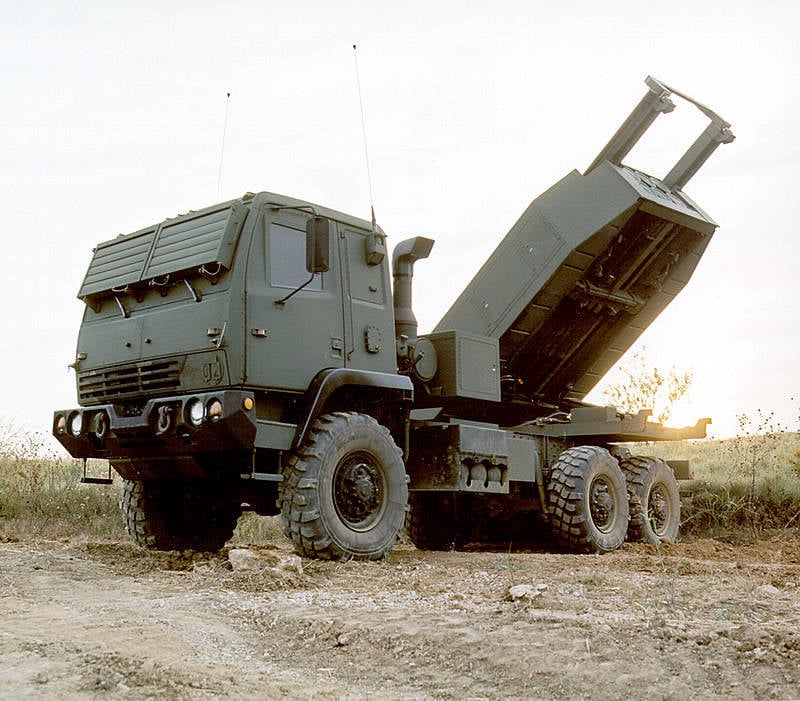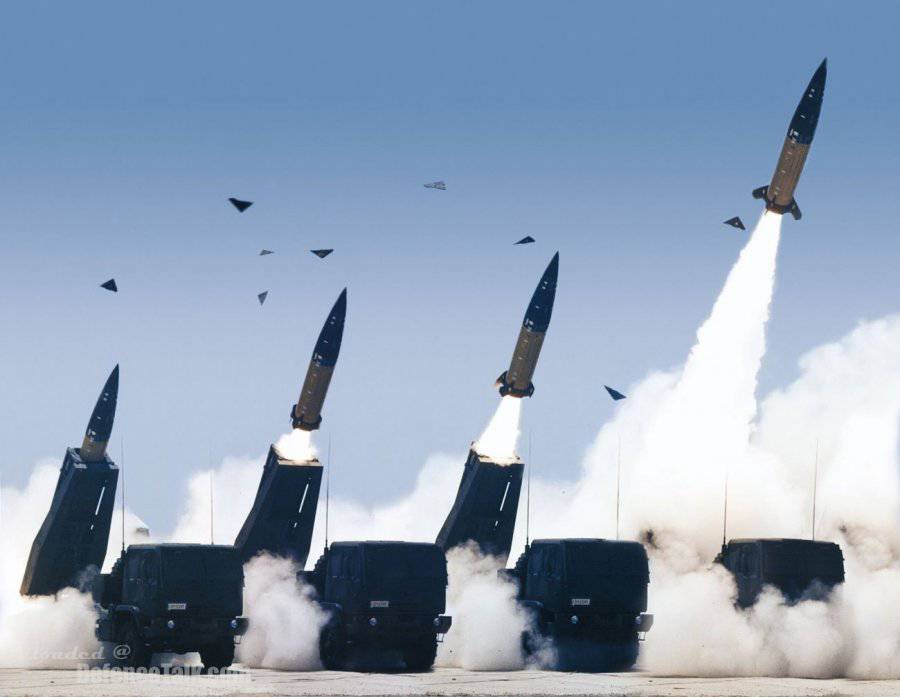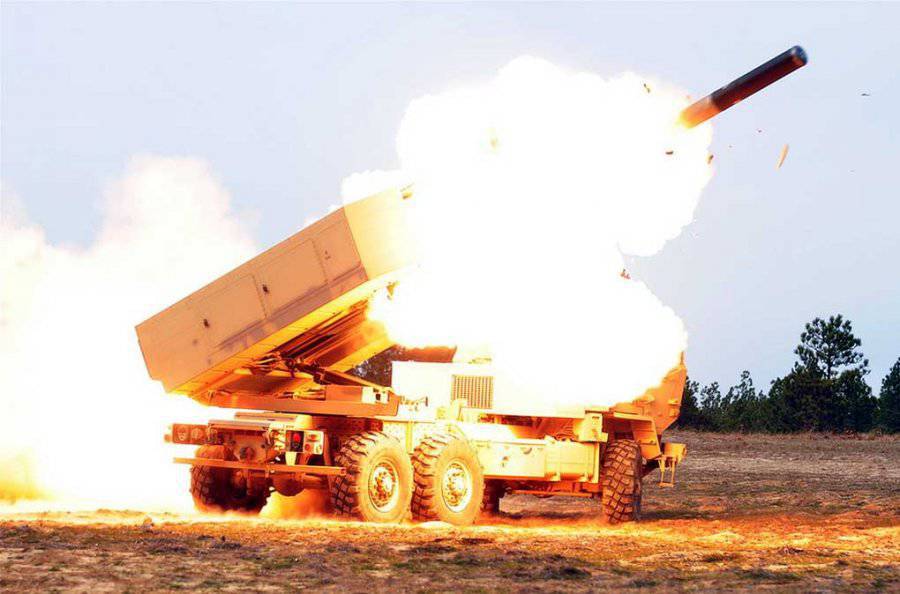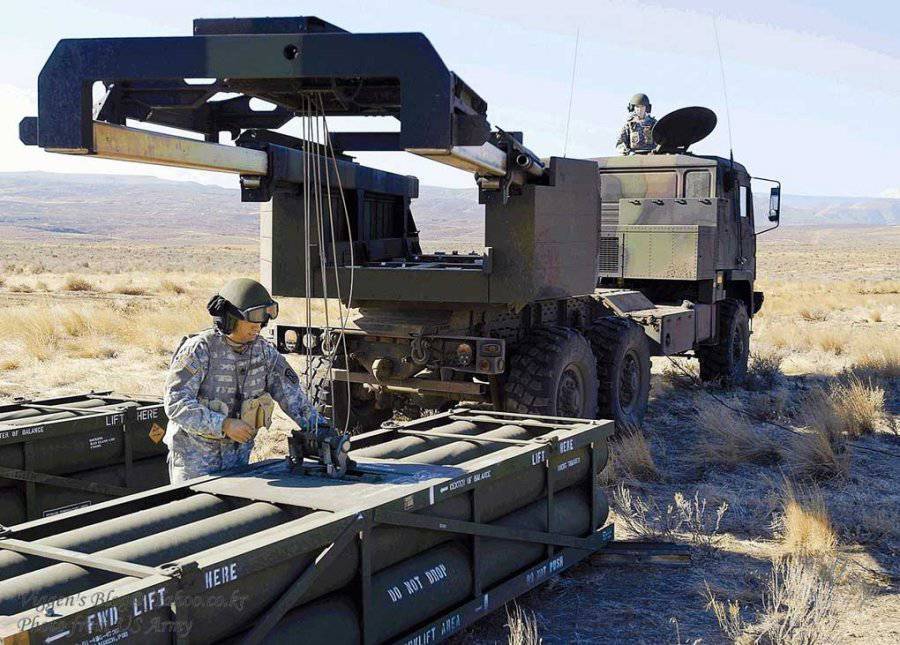US Army received HIMARS
World Trade Analysis Center weapons announced the transfer of a highly mobile HIMARS artillery system to the US Army by Lockheed Martin 400.
The first PU MLRS HIMARS ground forces of America entered service in June 2005 of the year, and in December of the same year they signed a contract for their serial supply. New agreements for the supply of MLRS are signed annually, so the UAE signed a contract in 2006 for the supply of 20 launchers with a total value of 752 million dollars. The term of this contract is 2013 year. In 2007, a similar contract was concluded with Singapore, there it was about 18 PU for the sum of 330 million dollars, the end of deliveries is scheduled for the current year. In the same year, deliveries of 12 installations to Jordan, according to the contract from 2009 of the year, amounting to $ 220 million, must end. The US Armed Forces plan to purchase around 900 MLRS HIMARS.
MLRS HIMARS is designed to destroy areas of concentration of manpower, air defense objects, means of technical support and support, artillery means and lightly armored enemy objects. Another task of the system is to provide fire support to its own troops and logistic support units. The need for highly mobile MLRSs that allow the transfer of BTA forces to the desired area in the Marine Corps and airborne units led to the creation of High-Mobility-Artillery Rocket System (HIMARS). The first prototype of it saw the light in September 1994.
At the beginning of 1996, a contract was signed between Lockheed Martin and the command-controlled armament of the US Army to assemble prototypes of HIMARS launchers, which amounted to 22,3 million dollars. After four and a half years, the company's specialists issued 3 fighting vehicles to the customer for testing over 2 years, and a fourth sample was left for factory testing. In July, 1998, the representatives of the ground forces carried out successful test shootings of the ATACMS missile from a prototype PU HIMARS.

The second series of the system was presented for complex testing in November 2003. During the tests, the NURS “M-26”, MGM-140B and 164A missiles were used, and the MLRS guided missiles were also tested. Unfortunately, there was no information about the possibility of firing from one chassis with projectiles of different caliber (change of TLC). Production tests of the prototype for compliance with the TZ ended in January 2004, confirming the stated tactical and technical and operational characteristics. During them, the car was loaded onto a C-130 plane and delivered to Fort Sill's eastern training ground, where it was unloaded in less than 5 minutes, after which, advancing to the combat training position and receiving target designation data, she fired a volley of six shells. With 16 June 2005, the system began to enter the army, the first recipient was the 3 Division 27 of the 28 Field Artillery Regiment of the US Airborne Corps.
At the end of the 2006 of the year, the US Army received an order from Lockheed to develop a BM cabin, which would increase combat crew protection, 30 September 2010 army received its order at the price of 15,8 million dollars. In March, 2009, the tests were completed HIMARS, during which the launch was made 2 SAMUR SLAMRAAM. For this, a converted transport and launch container from the ATACMS complex was used, and a standard fire control system with additional software was used at launch. According to the test results, it was decided to complete work on the creation of a WPC for anti-aircraft guided missiles and, in accordance with the plans of the command, to use such machines within the framework of an air defense system.
The system was tested in real combat conditions during Operation Iraqi Freedom; one of the latest applications was observed on February 14 2010 in Afghanistan. There, during the counter-terrorist operation in the city of Marjah, two MLRS projectiles deviated very much from the target and hit the civilian building, as a result 12 killed civilians were counted.
As a combat vehicle in the MLRS HIMARS, a modified chassis of a five-ton truck with a wheel arrangement of 6x6 Stewart & Stevenson is used, with an armored cabin that provides protection from bullets from shell fragments and mines. The six-cylinder Caterpillar 3116 ATAAC supercharged diesel produces 290 hp. from. At 2600 rpm engine displacement 6,6 liters. Transmission - Allison seven-speed automatic, clearance 564 mm., Ford up to 0,9 meters. The calculation of the machine is made up of 3 people - the driver, the commander and the operator-gunner.
The system does not use a permanent package of guides, instead of it, standard disposable TPK MLRS MLRS are used. Shooting can be conducted by all types of URS and NURS used in the MLRS, in addition, MGM-140 and 164 guided missiles from the ATACMS complex can be used. After the shooting, TPKs are replaced after firing with new ones, equipped and sealed at the factory. Shelf life in TPK is 10 years. The transport and launch container itself is a package of 6 fiberglass pipes in an aluminum cage with metal runners inside, which are arranged in a spiral and give the projectile rotation when started counterclockwise. Curb weight is 2270 kg. The system is reloaded using a retractable console with a winch, controlled from the cab or with a remote control.
Fire control systems, electronics and data receiving-transfer units are fully unified with the elements of the BM М270А1 MLRS MLRS. The upgraded version of the launcher contains advanced control units and elements of the navigation system that facilitate the management and operation of the MLRS.
The transport-loading machine is designed for the transportation and loading and unloading of TPK. It is a truck, in the back of which a crane platform is installed. TZM with a trailer is capable of transporting 4 transport-launch containers.



Information